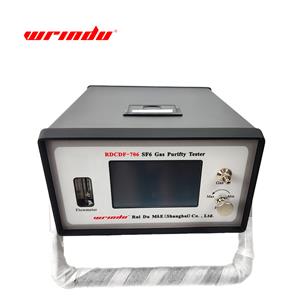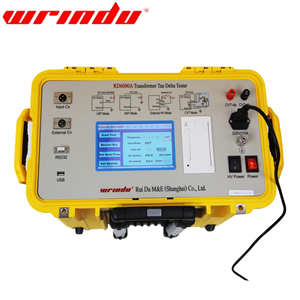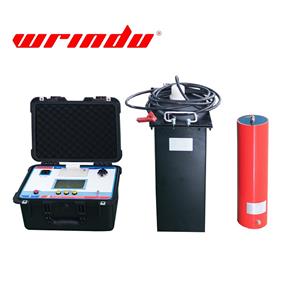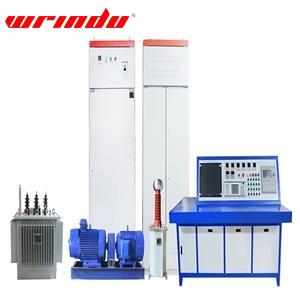Gas vs liquid chromatography: Key Differences, Advantages and Choosing
What Are the Differences Between Gas Chromatography (GC) and Liquid Chromatography (HPLC)?
Chromatography is an important technique in chemical analysis used for separating and quantifying mixtures. Two widely used methods in laboratories today are Gas Chromatography (GC) and Liquid Chromatography (HPLC). Although both techniques work on similar principles, they have different characteristics, applications, advantages, and disadvantages. In this article, we will explore the differences between GC and HPLC, their strengths, and their weaknesses to help you choose the right method for your analysis.
What Are the Basic Principles of GC and HPLC?
Gas Chromatography (GC)
Gas chromatography is an analytical technique that uses a gas as the mobile phase to separate the components of a sample. The sample is vaporized and carried by a carrier gas into a column. In the column, the components of the sample interact with the stationary phase and are separated based on their unique properties. The separated components are then detected, and the data is recorded as a chromatogram.
Liquid Chromatography (HPLC)
Liquid chromatography uses a liquid as the mobile phase. The sample is pushed through a column packed with a stationary phase. The components of the sample are separated based on their interactions with the stationary phase and the liquid phase. Unlike GC, samples in HPLC do not need to be vaporized, making it suitable for more types of compounds, especially those that are heat-sensitive or high-molecular-weight substances.
What Are the Key Differences Between GC and HPLC?
Differences in Mobile Phase
GC: Uses gases like nitrogen, helium, or hydrogen as the mobile phase.
HPLC: Uses liquids such as water, acetonitrile, or methanol.
Sample Requirements
GC: The sample must be vaporized before analysis, so GC is suitable for volatile and heat-stable compounds.
HPLC: Samples do not need to be vaporized, making HPLC suitable for heat-sensitive, large molecules, or non-volatile substances.
Differences in Columns
GC: Columns are long (usually 1-30 meters) with coarser packing material, designed for gas-phase and volatile samples.
HPLC: Columns are shorter (typically a few centimeters) and packed with fine material (5-10μm), designed for liquid samples, providing higher resolution.
Range of Applications
GC: Mainly used for low molecular weight, volatile, and heat-stable organic compounds like solvents, gases, and petroleum products.
HPLC: Suitable for high molecular weight, non-volatile, and heat-sensitive compounds such as large molecules, drugs, proteins, and natural products.
Detection Methods
GC: Common detectors include Flame Ionization Detectors (FID), Thermal Conductivity Detectors (TCD), and Electron Capture Detectors (ECD), suitable for high sensitivity detection of gases.
HPLC: Common detectors include Ultraviolet (UV) Detectors, Fluorescence Detectors (FLD), Refractive Index (RI) Detectors, and Electrochemical Detectors (EC), ideal for analyzing complex liquid samples.
What Are the Advantages and Disadvantages of GC and HPLC?
Advantages of Gas Chromatography (GC)
High Separation Efficiency: Gas-phase samples flow quickly through the column, resulting in high separation efficiency.
Simple Operation: GC is easy to operate, and the analysis is quick, making it ideal for high-throughput analysis.
High Sensitivity: GC can detect very low concentrations, even down to the picogram (pg) level.
Wide Range of Applications: GC is excellent for volatile and heat-stable compounds, offering precise separation.
Disadvantages of Gas Chromatography (GC)
Sample Restrictions: GC is limited to volatile and heat-stable compounds. It cannot handle non-volatile or heat-sensitive substances.
High Equipment Requirements: The instrument needs strict temperature control, and the purity of the carrier gas must be maintained, requiring regular maintenance.
Difficult Sample Recovery: Although it is possible to recover separated samples, it is often challenging due to the small sample amount and the complexity of re-condensing gases.
Advantages of Liquid Chromatography (HPLC)
Wide Range of Applications: HPLC can analyze a broader range of samples, including heat-sensitive, high-molecular-weight compounds, and non-volatile substances.
Flexible Separation: The mobile phase in HPLC can be easily adjusted, allowing for better control and optimization of the separation process.
Easy Sample Recovery: Samples do not need to be vaporized, making it easier to recover the components and perform quantitative analysis.
Lower Separation Temperature: The separation process is done at lower temperatures, which is better for heat-sensitive substances.
Disadvantages of Liquid Chromatography (HPLC)
Slower Analysis Speed: The flow rate of liquids is slower compared to gases, so HPLC is generally slower than GC in separating components.
More Complex Equipment: HPLC instruments are more complex and require careful control of pressure and flow rate, which makes them harder to operate.
Lower Separation Efficiency: Although HPLC has good separation capabilities, its efficiency and resolution can be lower than GC in certain applications.
How to Choose Between GC and HPLC?
When deciding between GC and HPLC, consider the following factors:
Sample Type: If your sample is volatile, low molecular weight, and heat-stable, GC is the best choice. If your sample is heat-sensitive, large, or non-volatile, HPLC will be more suitable.
Analysis Speed and Sensitivity: If you need quick analysis and high sensitivity, GC is ideal.
Sample Recovery: If you need to recover the sample or work with large quantities, HPLC is better.
Separation Requirements: For complex mixtures or if separation needs to be highly controlled, HPLC offers more flexibility.
Advantages of RDSP-3401 Insulating Oil Gas Chromatography Tester
Efficient Data Management and Seamless Connectivity
The RDSP-3401 Transformer Oil Gas Chromatograph offers highly efficient data transmission through advanced 100/1000 Mbps Ethernet interfaces and an embedded IP protocol stack, simplifying laboratory configuration and data management. With real-time monitoring and connectivity, it supports up to three independent IP addresses for seamless integration with on-site workstations, departmental computers, and executive systems. The dedicated workstation ensures streamlined data processing and instrument control, while remote connectivity allows for easy diagnostics and updates, ensuring efficient and continuous operation.
Enhanced Stability, Precision, and Versatile Integration
Designed for reliability, the RDSP-3401 features enhanced stability through a multi-processor parallel mode and supports up to three detectors for complex sample analysis. The modular design simplifies maintenance, reducing downtime and increasing long-term stability. Precision temperature control is achieved through an advanced microcomputer system with eight independent temperature outputs and a sixteen-step temperature ramping program. Additionally, the system's high-resolution 24-bit AD circuit guarantees accurate and stable data. With broad OS compatibility and seamless integration with DCS systems, the RDSP-3401 provides robust support for power industry applications.
Click here to learn more about RDSP-3401 insulating oil gas chromatography tester.
Some articles you will be interested in are as follows.
Working principle of insulating oil gas chromatography analyser.
How to optimize the transformer oil chromatography testing process?
A brief discussion on the important role of transformer oil chromatography analysis.




